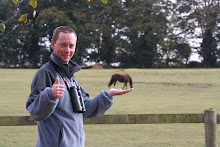Birding was slow again today. We tried Hidden Valley for the first time, got wet feet but did add white crowned sparrow to the list. Banding was also very quiet so we headed to the Meadows. A birding group told us of a vesper sparrow that was hanging out with a couple of savannahs but the trail was pretty busy and we didn't see any sparrows at all. A single greater yellowlegs was on the pool (water levels have been high since last weeks rain) and a small group of 5 pec sands roosting on the island. There must have been a load roosting out of view because 25 took off and flew south!
Having seen a tagged monarch while we were banding in the morning, we decided to check out the tagging demo run by the CMBO. There was an excellent introduction to the scheme and all about the life cycle, their threats and migration of the butterflies before the tagging started.
Quite amazing that they will have 4-5 generations in a year but it is only the last one, after August, that migrates south to spend the winter in Mexico. They then return to the southern States where they breed and die. They never return back to New Jersey. Tagged individuals have been recorded flying over 500 miles in 3 days!!
The monarchs are caught and a tagged with a small sticker on the underwing with a unique number. They are sexed, the wing condition is assessed, fat stores recorded and the wing is measured before it is released.
Still amazes me that they undertake such a long migration and can even reach the UK.
Pic 1 - the tagged monarch we saw feeding in the morning. The tag has an individual number and email address to report it to
Pic 2 - male monarch. They have thinner black lines (look more orange) and have black spots on the hindwing
Pic 3 - female monarch. The black lines are much thicker and they don't have the black spots
Pic 4 - one of the CMBO volunteers explaining about the tagging
Pic 5 - the monarchs are kept cool and in a small breathable bag to stop them flapping too much
Pic 6 - wing condition checked for wear
Pic 7 - a small patch of wing scales are rubbed off before the tag can be applied. This causes no harm to the butterfly and doesn't fall off
Pic 8 - wing length taken. This can be up to 56mm but the average is about 50mm. The same as a goldcrest!!
Pic 9 - data recording
Pic 10 - release
Pic 11 - shows the migration routes the monarchs are taking.












No comments:
Post a Comment